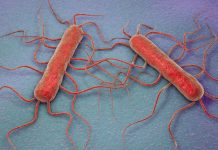If you’re pregnant or preparing a holiday meal for someone who is, take extra care when it comes to food safety. Immune system changes in pregnant women place themselves and their unborn child at an increased risk of foodborne illness.
Women who are pregnant, or may become pregnant, have to make safe choices with food and avoid certain foods to prevent a foodborne illness and for the safety of the unborn child.
The foods of concern and that should be safely handled and prepared are: seafood, undercooked meat and poultry, eggs, ready-to-eat (RTE) foods (packaged foods and luncheon meats), raw milk and milk products, raw sprouts, raw dough or batter, and unpasteurized juice or cider.
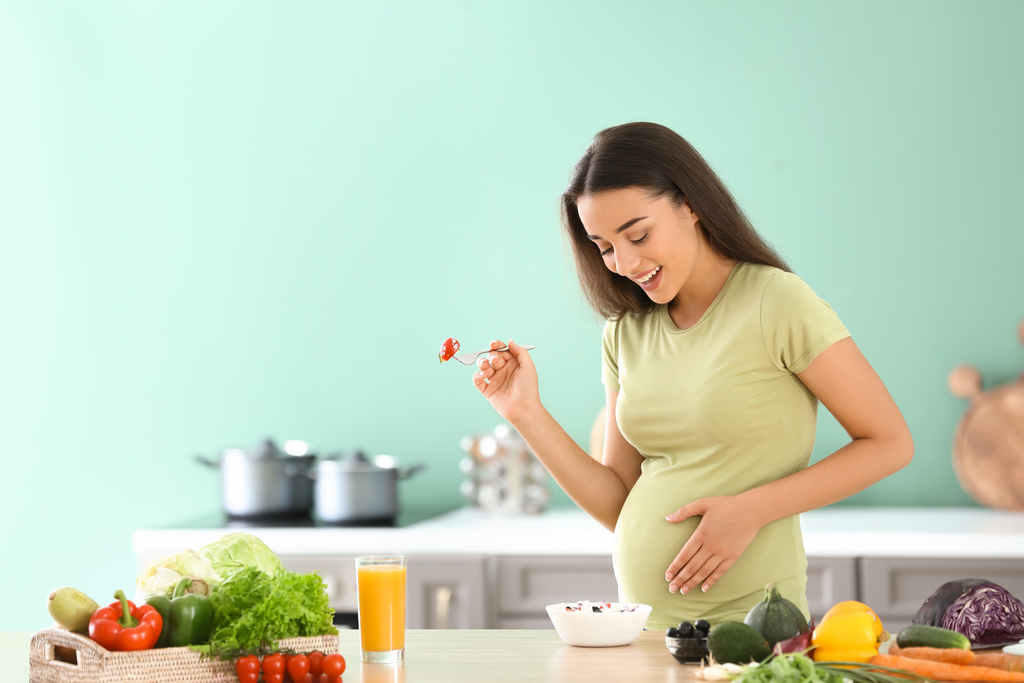


Seafood
Women who are pregnant, or may become pregnant, as well as breastfeeding mothers, should make informed choices when it comes to seafood.
- Learn about proper hygiene, cross contamination, cold and hot food safety, foodborne pathogens, and best practices to prevent foodborne illness.
- Food Manager Training & ANSI Certification - $99.00
- Food Handler Training - only $7.00!
- HACCP Training: 16hr/4hr/1hr
- Food Allergy Training - $15.00
- Enter Promo "train10off" at Checkout
Seafood is important in a healthy diet with a lean, low-calorie source of protein. However, some fish may contain mercury or other harmful chemicals at sufficiently high levels to cause disease.
In 2019, the FDA and EPA updated their guidance regarding eating fish. This advice is geared toward helping women who are pregnant or may become pregnant – as well as breastfeeding mothers and parents of young children – make informed choices when it comes to fish that is healthy and safe to eat.
Choose a variety of fish that are lower in mercury
You can use this guide and chart to help you choose which fish to eat, and how often to eat them, based on their mercury levels. The “Best Choice” have the lowest levels of mercury.
- You can eat 2 to 3 servings a week of fish in the “Best Choices” category,. For adults, a typical serving is 4 ounces of fish, measured before cooking, is a serving. Four ounces is about the size and thickness of an adult’s palm.
- You can eat 1 serving a week of fish in the “Good Choices” category, but no other fish that week.
- You should not eat fish in the “Choices to Avoid” category or feed them to young children. However, if you do, eat fish with lower mercury levels in the following weeks.
FDA Fish Consumption Advice Chart (PDF)
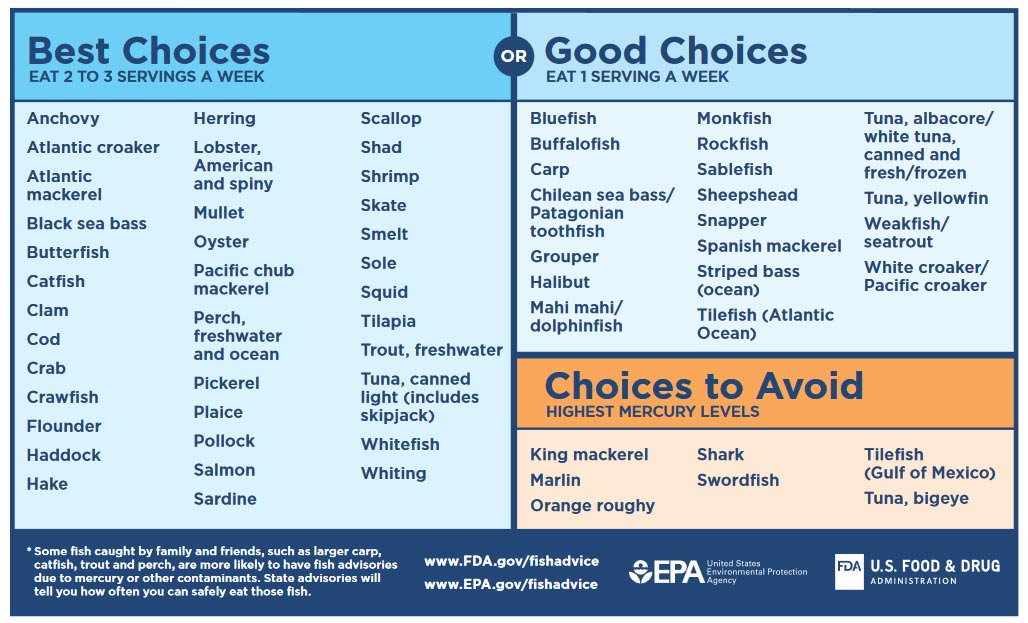


Seafood Minimum Cooking Temperature: Likewise, all seafood should be cooked to a safe internal minimum temperature of 145°F. Raw seafood (like sushi or shellfish) may contain parasites or bacteria that can make pregnant women ill and could potentially harm their unborn child.
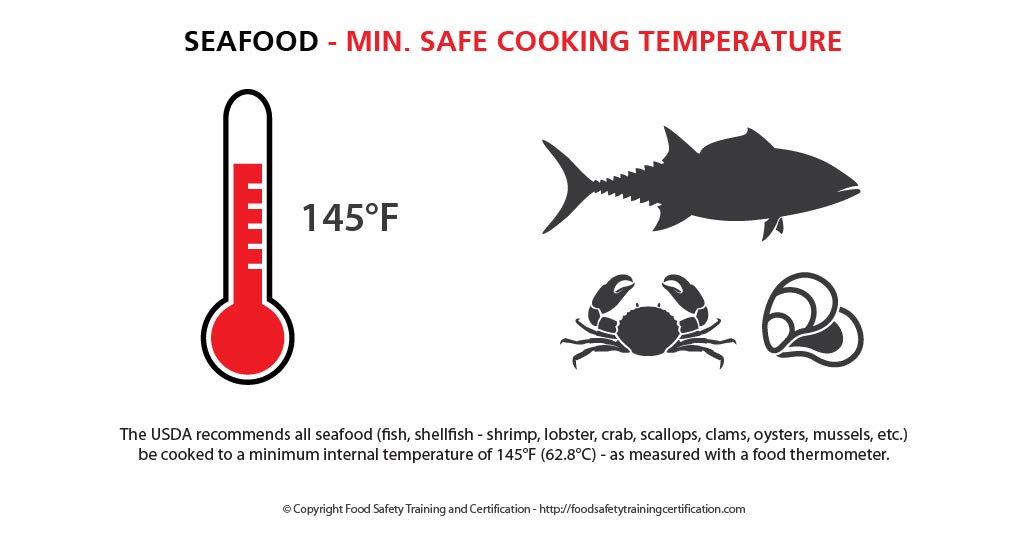


Eggs
Eggs – just like raw meat, poultry and fish – must be properly stored, handled and cooked – to be safe. Eggs that appear normal can contain a germ called Salmonella that can make you sick, especially if you eat raw or lightly cooked eggs.
Likewise, raw cookie dough can contain bacteria – like salmonella and e. coli – that can cause foodborne illness. In fact, the FDA has issued warnings for people to not eat raw cookie dough, and other products with untreated flour, due to an E. coli risk and raw eggs from a salmonella risk.



Ready-To-Eat (RTE) Foods
Ready-To-Eat foods are pre-packaged foods for ease of consumption. Products designated as convenience or ready-to-eat foods are often prepared food that can be sold as hot, ready-to-eat dishes; as room-temperature, shelf-stable products; or as refrigerated or frozen products that require minimal preparation (typically just heating).
Ready-to-eat foods have a high risk of causing foodborne illness. Some examples of ready-to-eat foods include:
- Soft cheeses such as brie, feta, ricotta, blue-veined, and Mexican-style soft cheeses such as queso fresco (unless it is made with pasteurized milk)
- Soft-serve ice cream
- Hot dogs, luncheon meats, cold cuts
- Pâtés/meat spreads – unless canned
- Precooked chicken and other meats
- Refrigerated smoked seafood products
- Deli-type salads such as coleslaw, potato, macaroni, tuna, etc.
- Pre-packed raw vegetables and mixed raw vegetable salad
- Pre-cut fresh fruits and fruit salads
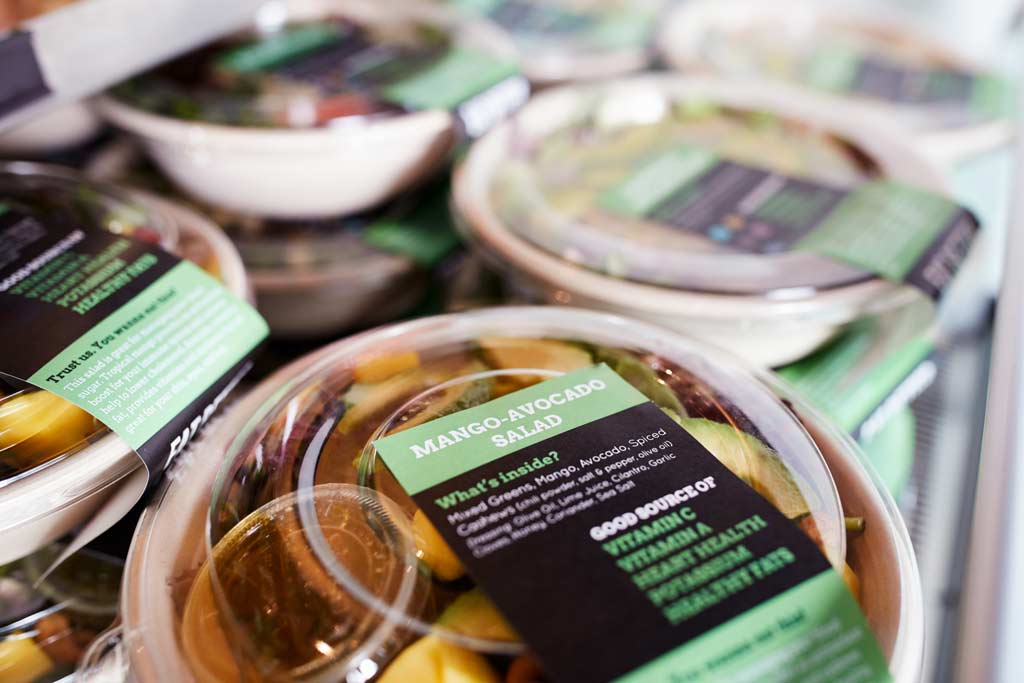


Raw Milk and Milk Products
Raw milk, i.e., unpasteurized milk, can harbor dangerous microorganisms that can pose serious health risk. Raw milk is milk from cows, sheep, or goats can contain harmful bacteria such as Salmonella, E. coli, and Listeria.
Pasteurization is the process that kills harmful bacteria by heating milk to a specific temperature for a set period of time.



Listeria
Listeria monocytogenes (Listeria) is a harmful foodborne bacteria found in ready-to-eat and unpasteurized (raw) milk and milk products – and can cause invasive severe human illness (listeriosis) in susceptible people.
Unlike most bacteria, Listeria survive and multiply at lower (refrigerator) temperatures – which allows it to reach levels high enough to cause illness. Although freezing will prevent Listeria bacteria from growing, it does not kill the bacteria.
For most healthy people, the infection doesn’t pose much of a threat. However, pregnant women run a serious risk of becoming ill from the bacteria Listeria. If a woman is pregnant, Listeria can can cause miscarriage, or illness, or death of the newborn baby – even if the mother doesn’t feel sick.



What are the symptoms of listeriosis?
Pregnant women typically experience only fever and other flu-like symptoms, such as fatigue and muscle aches. However, infections during pregnancy can lead to miscarriage, stillbirth, premature delivery, or life-threatening infection of the newborn.
People with invasive listeriosis usually report symptoms starting 1 to 4 weeks after eating food contaminated with Listeria; some people have reported symptoms starting as late as 70 days after exposure or as early as the same day of exposure.
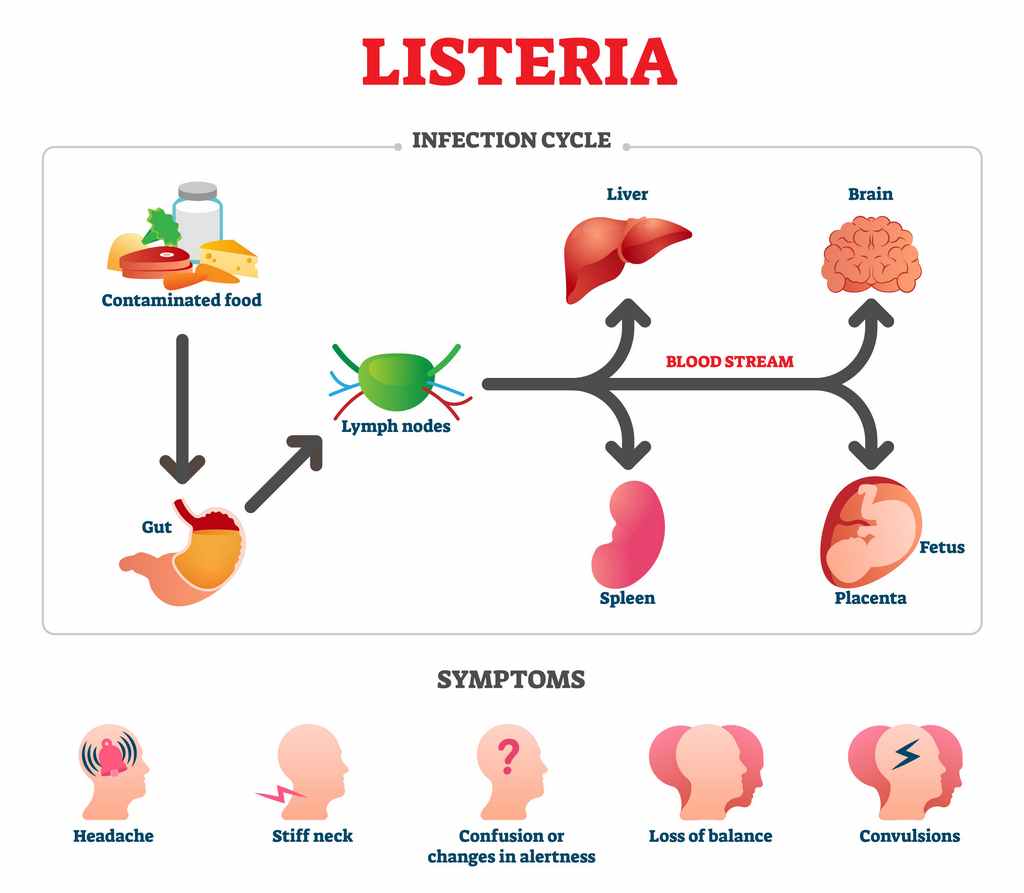


How to Reduce Your Risk from Listeria
There are three very simple things you can do to help prevent illness from Listeria:
1. Chill at the Right Temperature
The right temperatures slow the growth of Listeria. Put a refrigerator thermometer in the refrigerator and adjust the refrigerator temperature control, if necessary. Put a second thermometer in the freezer. Your refrigerator should register at 40°F (4°C) or below and your freezer at 0°F (-18°C).
2. Use Ready-to-Eat Foods Quickly!
Use ready-to-eat, refrigerated foods by the Use By date on the package. The longer they’re stored in the refrigerator, the more chance Listeria has to grow.
3. Keep the Refrigerator Clean
Clean your refrigerator regularly. Wipe up spills immediately. This is particularly important, so Listeria doesn’t have a place to grow and then spread to other foods. Clean the inside walls and shelves with hot water and a mild liquid dishwashing detergent, rinse, then dry with a clean cloth or paper towel.
Summary
Women who are pregnant, or may become pregnant, have to make safe choices with food and avoid certain foods to prevent a foodborne illness and for the safety of the unborn child.
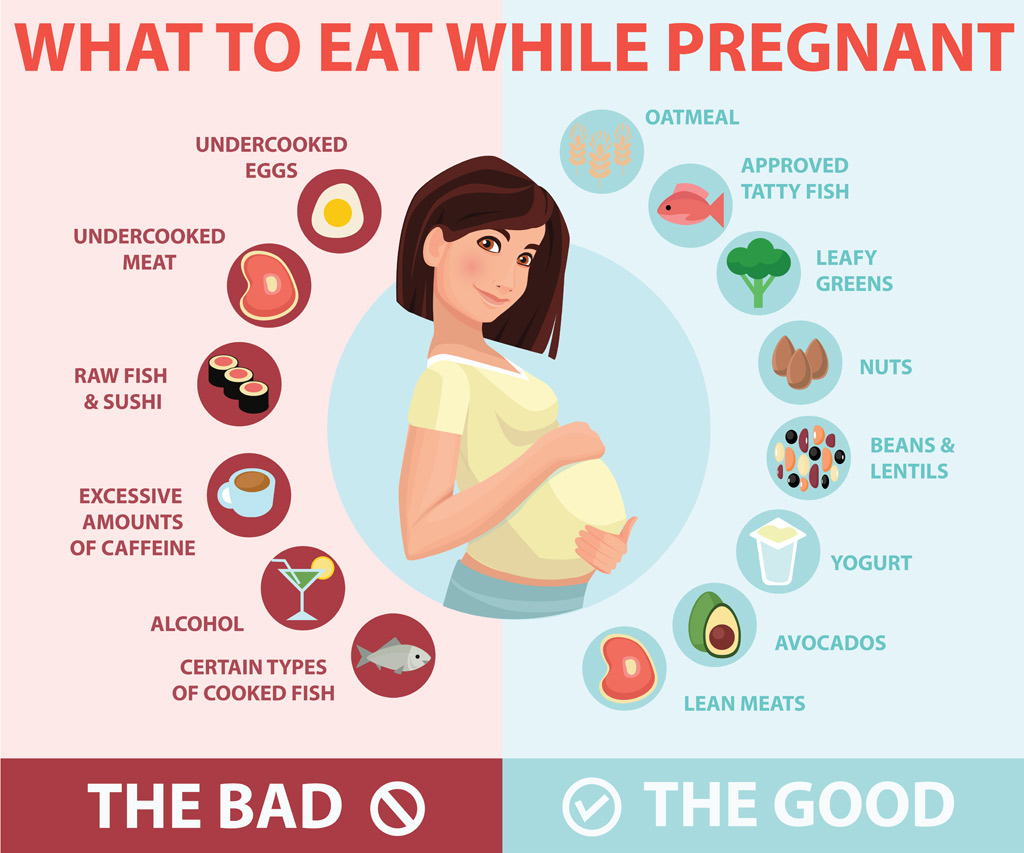


References
- FoodSafety.gov – People at Risk: Pregnant Women
https://www.foodsafety.gov/people-at-risk/pregnant-women - USDA – FoodSafety.gov: Food Safety for Baby and Me
https://www.flickr.com/photos/usdafoodsafety/28153216133 - CDC: Listeria.
https://www.cdc.gov/listeria/index.html - FDA: Get the Facts about Listeria.
https://www.fda.gov/animal-veterinary/animal-health-literacy/get-facts-about-listeria - WebMD: What is Listeria?
https://www.webmd.com/food-recipes/food-poisoning/what-is-listeria#1 - FDA: Food safety for pregnant women.
http://fda.gov/Food/FoodborneIllnessContaminants/PeopleAtRisk/ucm312704.htm - New York State Department of Health website. Listeriosis (Listeria infection).
http://health.ny.gov/diseases/communicable/listeriosis/fact_sheet.htm




